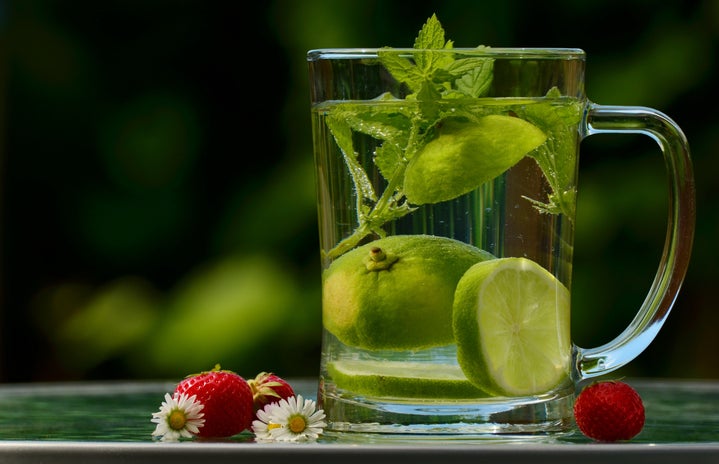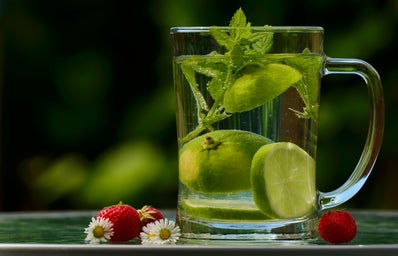I vaguely remember hearing the term “Menstrual Cup” when learning about periods in school in the 6th Grade, not really learning much other than that it was a menstrual product that some women used. However, coming from an Indian home in Kenya, it was something that I would never hear of again, especially where the only real accepted form of period products in my community was sanitary pads, not even tampons, let alone cups. Tampons were and often still are seen as taboo, there is this misconception that the use of tampons are somehow associated with the loss of virginity. With this Indian traditional view of period products in general, it’s easy to understand how I’d never really hear about menstrual cups again until I would move to England for university.
In my first year, there was a girl who lived on my floor who would now and again mention how she used a cup, and ever since she started, she couldn’t imagine herself going back to using anything else. Listening, I just remained quite confused about how a cup could possibly fit up there and somehow protect me from dreaded leaks and period stains.
Fast forward two years, with my growing interest in the different ways I can live more sustainably, I stumbled across an article about how much waste non reusable menstrual products produce. The statistics are shocking and a little heart breaking. In the UK alone, every woman will use an average of 11,000 disposable period products in their reproductive lifetime. These products and their plastic packaging generate more than 200,000 tonnes of waste per year. To put the effect of all this waste into perspective, in 2010, a UK beach clean found an average of 23 sanitary pads and 9 tampon applicators per kilometre of British Coastline (Women’s Environmental Network, 2019). As a self-diagnosed sufferer of eco-anxiety, this put me in a state of panic. At first it seemed like something I couldn’t help, how else was I supposed to deal with the monthly crimson tide? I decided to consult uncle Google, the response?
The menstrual cup.
After spending at least, a month, researching how it works, watching video after video on YouTube and reading as many articles as I possibly could, I took the plunge. There are an endless number of brands that produce cups, all varying in colour, size and shape. I settled for the cheapest and the one with the most environmentally friendly packaging. The OrganiCup. And this little silicone miracle changed my life.
Now even though I made the switch solely because of the environmental benefit, it quite literally changed my relationship with my period. The thing about the menstrual cup is that it does ask for a certain level of intimacy with your period because of the way it works. All menstrual cups are made with medical grade silicone that is very flexible, they also have a little stem at the bottom. This allows for easy insertion and removal. You basically fold the cup, push it up your vaginal canal (same as you would a tampon), and once it’s in place and as far up as is comfortable for you, you let go and it simply opens up and creates a suction seal around your cervix. As you go about your day, it collects the blood and at the end of the day, you take it out by pinching the bottom to break the suction seal and pull it out with the stem. Then you rinse it, and pop it back in. Once your period is done for the month, you place your cup in boiling water for about 5 minutes to sterilise it. There’s a couple of reasons why this method and the menstrual cup are so great and why so many people have flagged it as the revolutionary period product. Here’s a few reasons why I love mine so much (aside from the obvious environmental benefit):
-
It collects the blood as opposed to absorbing it like a tampon or pad so you can keep it in there for up to 12 hours without having to worry about leakages.
-
If you put it in right, you don’t feel it AT ALL.
-
A lot of people have said that it feels like the cup has made their periods shorter – this isn’t really the case, but it does seem shorter because you’re worrying and thinking about it less!
-
You save so much money. Personally, I would spend about £5 a month on pads, depending on how heavy and long your period is, that could be higher or lower. A cup can cost you anywhere between £15 and £30 and can last you up to 10 years. So even though the starting cost is high, you start saving after three to six months. Then you have an extra £5 a month to save or spend. Yay!
-
They are so much more comfortable than pads or tampons. Pads are basically just adult diapers for women, they feel gross and smell gross. As for tampons, even though you don’t feel them, they can be quite drying and uncomfortable because they absorb the blood as well as the necessary vaginal fluids that keep you clean and comfortable. Plus you don’t have to worry about (potentially) dying from Toxic Shock Syndrome if you forget to take out your tampon after the recommended four hours.
There’s a reason why most cup users can’t shut up about their cups, myself included. There’s just so much to love about them. It might be a little outside your comfort zone and can take a little getting used to, but once you get the hang of it. You will well and truly love your cup and dread the arrival of your period a little less.
Sources:



